DeWalt DS210 Handleiding
DeWalt
Niet gecategoriseerd
DS210
Bekijk gratis de handleiding van DeWalt DS210 (8 pagina’s), behorend tot de categorie Niet gecategoriseerd. Deze gids werd als nuttig beoordeeld door 96 mensen en kreeg gemiddeld 5.0 sterren uit 48.5 reviews. Heb je een vraag over DeWalt DS210 of wil je andere gebruikers van dit product iets vragen? Stel een vraag
Pagina 1/8

DS210 Indoor Motion Sensor – PIR
WARNING: Read and understand all instructions and
warnings for this product. In addition, read and follow all
instructions and warnings provided with the DS100 JobSite Security
Portable Alarm System.
CAUTION: DANGER OF EXPLOSION, INJURY, OR FIRE.
Carefully follow all instructions and warnings on the battery label and
package.
• Never use a damaged or worn out battery.
• Discharged batteries should be replaced only with type CR-123 3.0
Volt Lithium batteries.
• Do not use re-chargeable batteries or attempt to charge batteries.
• Carefully remove the old, discharged battery.
• Do not attempt to open.
• Do not peel the label from the battery.
• Never dispose of a battery in a fire.
• Dispose of used batteries in accordance with local regulations.
• Recycle batteries.
• Always insert batteries correctly with regard to polarity (+ and -)
marked on the battery and the equipment.
• When installing the battery, do not use excessive force. If the
battery does not fit, check to make sure that it matches the polarity
markings.
• Never expose the battery terminals to any other metal object. This
can short circuit the battery.
• Avoid exposure to temperature extremes.
• When not in use, store the battery in a cool, dark, dry place.
• Keep batteries out of reach of children.
CAUTION: POTENTIAL EQUIPMENT MALFUNCTION OR
FAILURE. Do not use near water. Damage to the equipment may
occur. Equipment shall not be exposed to liquids.
FCC REGULATORY STATEMENT (FCC: HCQ3B6ETICRM)
• This device complies with Part 15 of the FCC rules. Operation is
subject to the following two conditions: (1) This device may not
cause harmful interference, and (2) the device must accept any
interference received, including interference that may cause unde-
sired operation.
INDUSTRY CANADA (IC: 2309A-ETICRM)
•NOTICE: This equipment meets the applicable Industry Canada
Terminal Equipment Technical Specifications. This is confirmed
by the registration number. The abbreviation, IC, before the reg-
istration number signifies that registration was performed based
on a Declaration of Conformity indicating that Industry Canada
technical specifications were met. It does not imply that Industry
Canada approved the equipment.
Components (Fig. 1)
A. Antenna D. Tamper
B. Test Mode Reed Switch E. Battery
C. Reset Button
Product Function (Fig. 2)
The DS210 Indoor Motion Sensor – PIR (Passive Infrared) is a low-
current motion detector highly sensitive to moving heat sources. This
sensor provides a 50' (15.24m) range of protection with advanced
digital scanning to recognize human movements and size to help
prevent false alarms.
NOTE: The DS210 signals an unsecured condition when motion is
detected by the sensor. Once an unsecured condition is signaled,
further unsecured conditions are inhibited until no motion is sensed for
a period of more than 90 seconds. This feature is designed to conserve
battery life.
Once activated, this device will work exclusively with the assigned
DS100 JobSite Security Portable Alarm System.
• The DS210 features 900 MHz spread spectrum communication
with the Base Unit allowing for a range of up to 2000' (610m).
• The DS210 features a tamper (D) that notifies the system when
the sensor cover is removed.
• The DS220 device uses a CR-123 3.0V Lithium battery (E) for
long life.
• The reset button (C) allows the Indoor Motion Sensor – PIR to
be registered to any DEWALT JobSite Security System with
easy set up.
NOTE: Metal objects blocking radio frequency (RF) transmission can
affect the range of the sensor
Prevention of False Alarms
The majority of alarms that occur are false. These situations happen
every day due to user error, incorrect installation or improper mainte-
nance of the system. False alarms will limit the responsiveness to the
system, and become a general inconvenience. As the number of
false alarms increases, authorities have become less apt to respond
to alarm systems due to this problem. Many of these situations can be
avoided by following some very simple practices.
• Ensure all users are properly trained on the operation of the
system.
• Always turn off the system with the Key Chain Remote Control
before entering protected area.
• Lock all protected doors, windows or any other asset attached to
a sensor.
• Check that motion detectors are not obstructed. Do not allow
sources of heat or sound in range of the motion or vibration
sensors.
• Check that premises are cleared and assets secured before setting
the system.
A
B
D
E
C
FIG. 1
FIG. 3 FIG. 4
FIG. 2
SITELOCK LLC, 626 Hanover Pike, Hampstead, MD 21074 (OCT04) Form No. 626134-01 DS210 Copyright © 2004 DEWALT
CAUTION: POTENTIAL EQUIPMENT MALFUNCTION OR
FAILURE. Do not touch the electronic components inside
the device, except the reset button and battery.
MOUNTING
TAPE
OR
HOOK &
LOOP
TOP VIEW
SIDE
VIEW

2
• Turn off all noise sources – radios, compressors, generators,
heavy equipment, etc.
• Know how to cancel an alarm or turn off the system before
activating.
• If a false alarm is tripped notify customer service immediately.
• Test the system on a monthly basis to ensure proper functioning
• Check cellular signal, power supply, and that sensors are secured
on a daily basis.
Recommended Locations
Recommended for use in enclosed areas, offices, climate controlled
storage, and monitoring interior spaces.
• The DS210 functions best when areas being protected are
bounded by solid barriers. Walls and floors provide good back-
drops for detecting moving heat (infrared) sources.
• For best detection, locate the motion sensor so that intruders
move across detection zone patterns, rather than toward or away
from the sensor (Fig. 2).
• Check areas for potential sources of false alarms. Remember
that the sensor responds to quick changes in heat patterns within
its coverage pattern. Avoid placing in direct or reflected sunlight,
or near objects that can be heated quickly by sunlight. Do not
place the DS210 looking at windows. Don’t place it near heating
or cooling sources, like heater ducts or air conditioners, which
might direct hot or cold air onto the sensor. Avoid appliances such
as space heaters which can rapidly heat up.
• Take into consideration the normal use of the area. Are there bats,
mice or other animals that could activate the sensor?
• Do not obstruct the coverage pattern with furniture or other
equipment.
Installing & Changing Battery
This wireless sensor requires a non-rechargeable CR-123 3.0 Volt
Lithium battery.
CAUTION: POTENTIAL EQUIPMENT MALFUNCTION OR
FAILURE. Do not touch the electronic components inside the device,
except the reset button and battery.
TO INSTALL BATTERY
1. Using a flat screwdriver, open the housing. Insert the screwdriver
about .25" (6mm) at the tab on the bottom of the unit (Fig. 3). The
screwdriver will enter the slot at about a 45˚ angle. Pry downward
on the handle of the screwdriver until the latch holding the cover
to the housing base releases.
2. Install the battery using the polarity (+ and -) markings on the
battery and equipment. Do not use excessive force. If the battery
does not fit, ensure that it matches the polarity markings (Fig. 1).
3. Press the Reset Button (C) on the device. After resetting the
sensor (see ), replace the cover. By open-Device Registration
ing the device, the Base Unit may display a tamper fault.
TO CLEAR A FAULT
a. Select Display.
b. Scroll list of fault(s).
c. Select Clear.
d. Enter master code.
e. Select OK.
TO CHANGE THE BATTERY
CAUTION: Never use a damaged or worn out battery.
1. Carefully remove the old, discharged battery. Dispose of the bat-
tery according to local regulations.
2. Install new battery using the polarity (+ and -) markings on the bat-
tery and equipment. Do not use excessive force. If the battery
does not fit, that it matches the polarity markings ensure (Fig. 1).
3. Press the Reset Button (C) on the device to re-register the sen-
sor and restore programming. After resetting the sensor, replace
the cover. By opening the device, the Base Unit may display a
tamper fault.
TO CLEAR A FAULT
a. Select Display.
b. Scroll list of fault(s).
c. Select Clear.
d. Enter master code.
e. Select OK.
Device Registration
To activate the device, it must first be assigned to your DS100 Base
Unit. Refer to the DS100 JobSite Security Portable Alarm System
Instruction Manual for more details on registering a device during the
initial setup.
NOTE: The system must be disarmed prior to any programming
changes.
1. Press the MAIN MENU button on the keypad of the DS100 Base
Unit.
2. Using the keypad, enter the master code.
3. Use the up and down arrows to scroll through the menu until the
System Settings menu is displayed. Select OK.
4. Use the up and down arrows to scroll through the menu until the
Wireless Device Maintenance menu is displayed. Select OK.
5. Use the up and down arrows to scroll through the menu until the
Add/Replace Device screen is displayed. Select OK.
6. The next available device number will be displayed. Up to 48 sen-
sors can be registered to the system. If there are no slots avail-
able, the screen will display ALL DEVICES IN USE. When the
device number is shown, select OK.
7. Using a flat screwdriver, open the housing. Insert the screwdriver
about .25" (6 mm) at the tab on the top of the unit. Pry downward
on the handle of the screwdriver until the latch holding the cover
to the housing base releases (Fig. 3).
8. When prompted by the LCD screen to RESET DEVICE, press and
release the reset button (C) located on the control board. The
screen will indicate that the device has been registered.
9. Snap the cover in place.
10. To edit the description of the device, select EDIT.
11. To edit the description, use the keypad to type a description of up
to 8 characters. The character that is being changed will be under-
lined. To move back a character, use the left/down arrow. To move
forward a character, use the right/up arrow. When complete, select
SAVE.
IMPORTANT: Write the device description and corresponding
device number on the included with theSensor Location List
DS100 JobSite Security Portable Alarm System. Keep this sheet
for reference. This information will be needed during the monitoring
service enrollment process. As device changes are made, be sure
to contact DEWALT customer service to make adjustments to the
monitoring service.
12. After registration, test the sensor. If programming through the initial
setup, the test function will be included in the setup sequence. If
adding the Indoor Motion Sensor after the alarm system has been
programmed, use the TEST button on the keypad.
Tests
WALK TEST
Wait 90 seconds since last motion was detected then walk through the
areas where protection is expected. When motion is detected, it will
unsecure and be removed from the test list on the Base Unit LCD
screen. Determine the limits of the coverage by repeating this test until
the motion is not detected.
COVERAGE TEST
While the system is unarmed, performing this test will indicate the
coverage area without sending an alarm. With the cover on the sensor,
hold a magnet on the bottom left side of the sensor until a red LED is
shown in the window. This activates the 1 minute test mode. Within
this period, a red LED will light every time the unit senses motion.
Mounting
• There are several options for mounting the DS210. The Indoor
Motion Sensor has two mounting holes on the back of the sensor
for easy installation using two #6 screws (provided) or two
#8 screws (not provided). Mounting tape and a hook and loop
fastener are also included. For mounting tape or hook and loop
fastener placement, see Figure 4.
• Mount the sensor 3–6' (.9–1.8m) from the floor. Any height outside
of this range will decrease the sensitivity of the motion detector.
• To eliminate false alarms, be sure that the sensor is secure so
it will not be bumped or otherwise moved.

3
Tamper – Faults
Faults indicate when there has been a serious issue that needs to be
addressed. This could be a number of things including an unsecured
device, low battery, tamper or weak signal.
If a fault is present, the system will chime and the Fault screen will be
displayed. To silence the chime, select SILENCE. To display the fault
and resolve immediately, select DISPLAY. Use the up and down
arrows to scroll through the faults. Resolve the issue with the action
listed in Description of Fault Codes chart.
TO REMOVE A TAMPER FAULT
1. Select CLEAR.
2. Use the keypad to enter the master code.
3. Select OK.
Full One Year Warranty
The DEWALT JobSite Security Portable Alarm System is warranted for
one year from date of purchase. We will repair, without charge, any
defects due to faulty materials or workmanship. For warranty repair
information, visit www.dewalt.com or call 1-800-4-DEWALT
(1-800-433-9258). This warranty does not apply to accessories or
damage caused where repairs have been made or attempted by
others. This warranty gives you specific legal rights and you may have
other rights which vary in certain states or provinces.
Fault Code Fault Display Description Action
DevPower Primary Power No battery power Change battery,
Lost Device # in device reset
DevLowBatt Low Battery Device battery Change battery,
Device # low reset
WeakSig Weak Signal Transmission signal Check for interference;
Device # from device is weak move device
Unsecured Unsecured Device has Check for intrusion;
Device # been tripped re-secure device
NoCheckIn No Check In Device check-in Check for interference;
Device # messages have move device
not been received
Tamper Tamper Device has been Close device or
opened or damaged replace if damaged
DESCRIPTION OF FAULT CODES
A
B
E
C
FIG. 1
FIG. 3 FIG. 4
FIG. 2
MISE EN GARDE : RISQUES DE MAUVAIS
FONCTIONNEMENT OU DE DÉFAILLANCE.
Ne pas toucher les composants électroniques à
l’intérieur du dispositif exceptés la pile et le
bouton de réinitialisation.
RUBANS
ADHÉSIF
OU
CROCHETS
ET
BOUCLES
Detecteur de mouvements iterieur
DS210 (PIR)
AVERTISSEMENT : Lire et comprendre tout avertissement
et toute instruction inclus dans ce manuel. De plus, lire tout
avertissement et toute instruction fournis avec le Système d’alarme
mobile de sécurité des chantiers DS100.
MISE EN GARDE : RISQUES D’EXPLOSION, DE BLESSURE
OU D’INCENDIE. Suivre attentivement toute instruction ou tout
avertissement inclus sur l’étiquette ou l’emballage des piles.
• Ne jamais utiliser une pile endommagée ou usée.
• Les piles déchargées doivent être remplacées par des piles au
lithium de type CR-123 de 3,0 volts.
• Ne pas utiliser de piles rechargeables ou tenter de recharger les
piles.
• Retirer soigneusement la vieille pile déchargée.
• Ne pas chercher à l’ouvrir.
• Ne pas retirer l’étiquette d’une pile.
• Ne jamais mettre une pile au feu.
• S’en défaire conformément aux régulations locales.
• Recycler les piles.
• Lors de l’installation des piles, toujours respecter la polarité (+ et -)
inscrite sur les piles et l’appareil.
• Pour installer une pile, ne pas forcer excessivement. Si la pile ne
rentre pas, vérifier que la polarité des bornes cadre avec les mar-
ques sur l’appareil.
• Ne jamais mettre les bornes des piles en contact avec tout autre
objet métallique. Cela pourrait provoquer un court circuit.
• Éviter de les exposer à des températures extrêmes.
• Après utilisation, entreposer les piles dans un lieu frais, sombre
et sec.
• Conserver les piles hors de la portée des enfants.
MISE EN GARDE : RISQUES DE MAUVAIS FONCTIONNEMENT
OU DE DÉFAILLANCE. Ne pas utiliser à proximité d’eau. L’appareil
risquerait d’être endommagé. Protéger l’appareil de tout liquide.
COMMUNIQUÉ DE LA FEDERAL COMMUNICATIONS
COMMISSION (FCC : HCQ3B6ETICRM)
• Ce dispositif est conforme aux dispositions du paragraphe 15 des
règlements de la FCC. Son utilisation est sujette aux deux condi-
tions suivantes : (1) Ce dispositif ne doit pas causer d’inter-
férences nuisibles, et (2) ce dispositif doit accepter toute inter-
férence reçue, y compris toute interférence pouvant causer un
fonctionnement indésirable.
INDUSTRIE CANADA (IC : 2309A-ETICRM)
•REMARQUE : Cet équipement se conforme aux Spécifications
Techniques pour Équipement Terminal d’Industrie Canada. Le
numéro d’enregistrement le confirme. L’abréviation « IC » devant
le numéro d’enregistrement signifie que l’enregistrement est basé
sur une Déclaration de Conformité indiquant que les spécifications
techniques d’Industrie Canada ont été respectées. Cela ne veut
pas dire que cet équipement a été approuvé par Industrie
Canada.
Description (fig. 1)
A. Antenne D. Altéré
B. Interrupteur Reed mode test E. Pile
C. Bouton de réinitialisation
VUE DE
DESSUS
VUE
LATÉRALE
D
Product specificaties
| Merk: | DeWalt |
| Categorie: | Niet gecategoriseerd |
| Model: | DS210 |
Heb je hulp nodig?
Als je hulp nodig hebt met DeWalt DS210 stel dan hieronder een vraag en andere gebruikers zullen je antwoorden
Handleiding Niet gecategoriseerd DeWalt
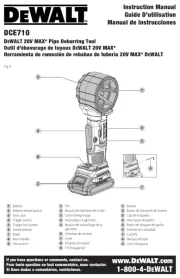
29 Juli 2025
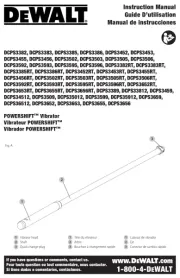
29 Juli 2025
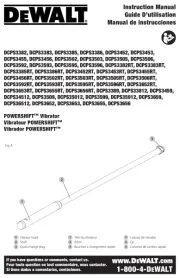
29 Juli 2025
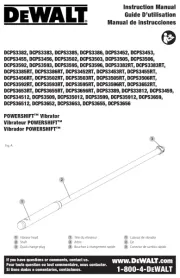
29 Juli 2025
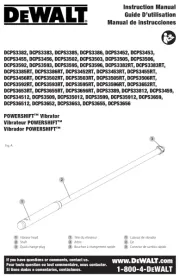
29 Juli 2025
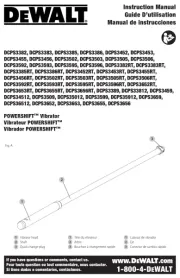
29 Juli 2025
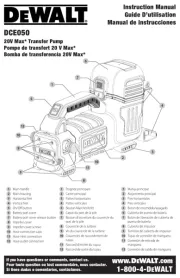
29 Juli 2025

4 Juli 2025

1 Juli 2025

23 Mei 2025
Handleiding Niet gecategoriseerd
- Ewent
- Unitech
- B-tech
- Auna
- Nolte
- Toolland
- E-Power
- INTIMINA
- Triton
- Clarion
- RTS
- Powerade
- Innoliving
- JoeCo
- Advanced Network Devices
Nieuwste handleidingen voor Niet gecategoriseerd
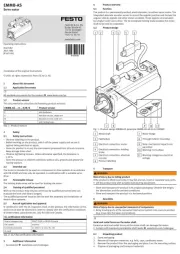
1 Augustus 2025
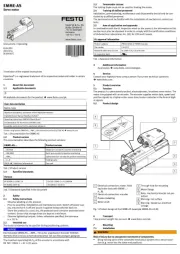
1 Augustus 2025

1 Augustus 2025
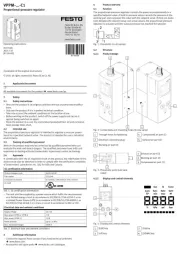
1 Augustus 2025
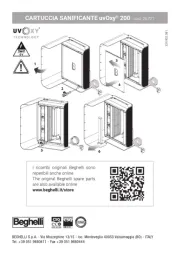
1 Augustus 2025
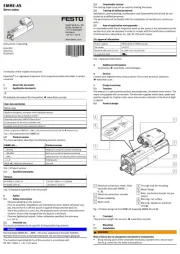
1 Augustus 2025
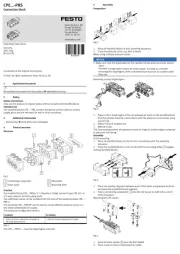
1 Augustus 2025

1 Augustus 2025

1 Augustus 2025
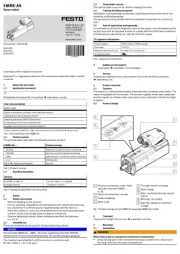
1 Augustus 2025